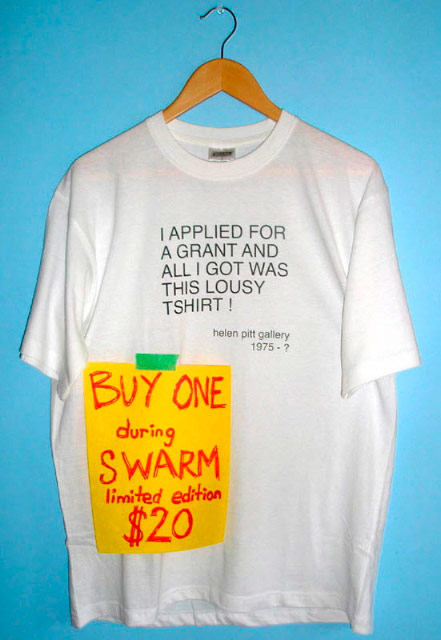
Just wanted to relay a little something worth repeating from the Canadian Art Gallery Hop panel that happened on Saturday at OCAD.
On the plus side, the presentations by artists Adad Hannah and Emily Vey Duke were very strong. Hannah told the crowd more about his awesome re-creation of the Raft of the Medusa performed by teenagers from 100 Mile House in BC. And Vey Duke spoke pretty nicely to the difference between good irony (saying two things at once and meaning both quite sincerely) and bad irony (saying two things at once and believing both to be false, hopeless, weak, fail and totes ridonk).
AGO curator David Moos' presentation was a little more troubling. In it, he spoke a lot about Toronto and how he feels like it's finally a really exciting time in the city again--an excitement, in his mind, signalled mainly by all the construction cranes that dot the landscape. He talked also about how he'd like to increase the gallery's focus on Toronto in the future.
I kind of cringed at Moos' descriptions because (a) the idea that cultural excitement need be correlated to new buildings and architecture is a fallacy that has recently cost Toronto an unfortunate crapload of cash money and (b) the AGO is actually a provincial institution and, on that count at the very least, should be working extra hard to see beyond the Toronto-centrism that tends to pervade our city's cultural scene.
So while I was cringing silently, OCAD president Sara Diamond spoke up and hit the nail on the head, saying that the Toronto scene (and related AGO foci) is, in her experience, much too self-contained—-and that it suffers from that self-containment quite severely, in part by sacrificing potentially helpful international connections.
Though I don't always see eye to eye with Diamond, I gotta say, she was spot on with this. I would also add a lack of national--and even regional--connections is a disadvantage that most Toronto-sited cultural institutions happily put themselves in. Since the whole Windsor-to-Ottawa corridor is home to some quite productive and exciting artists--not to mention the whole Vancouver-to-St John's span--I hope that Moos opens his mind a bit... or at least gets his presentation points thought through a bit more next time around.
Image from the City of Toronto
























